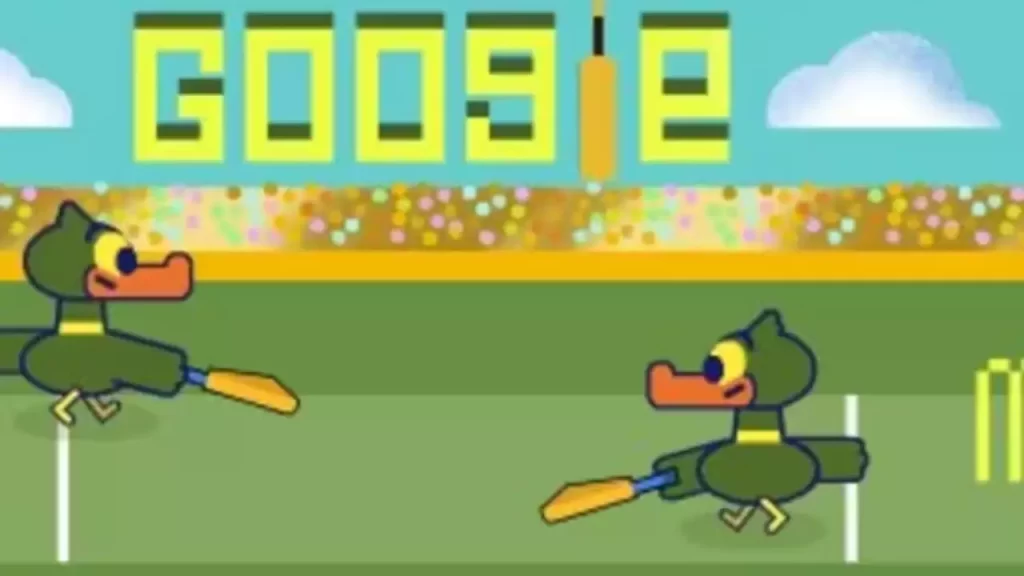
One organization has continually stood out in the broad internet, where people’s attention spans are short and content is plentiful: Google. But what precisely distinguishes Google? It’s about the innovative and interesting ways it exposes itself to the world, not just about being a dominant search engine. Discover “Google Doodle,” a potent tool for enthralling audiences and honoring historical milestones. In this blog post, we’ll look into Google Doodle’s interesting path and examine 10 amazing changes that have had a lasting influence.
Table of Contents
The Birth of Google Doodle:
Our story starts in 1998 when Larry Page and Sergey Brin, the creators of Google, decided to add a dash of whimsy to their logo by inserting a straightforward stick figure behind the second ‘o’ in the word ‘Google. This was the moment when Google Doodle, an unexpected but lovely change to the famous logo, was born.
Interactive Google Doodles:
The Google Doodle has changed over time from static images to interactive works of art. Users can interact with these Doodles by playing games or changing the appearance of the screen. The term “Google Doodle” has come to represent originality.
Celebrating Iconic Figures:
The Doodle is a forum to honor significant historical people and is not just about aesthetic changes. These Doodles introduce visitors to the lives and contributions of outstanding people, from Albert Einstein to Frida Kahlo.
Honoring Milestones:
The phrase “Google Doodle” frequently follows significant dates and anniversaries. Whether it’s the 200th birthday of a well-known author or the 50th anniversary of the Moon landing, Doodle is there to mark these important occasions.
Read This : Cetoex Made Easy 8-Step Guide to Buying Crypto.
Promoting Awareness:
The Doodle is an effective method for bringing attention to important social concerns. Users have quick access to data on women’s rights, climate change, and other topics. It demonstrates Google’s dedication to having a beneficial effect.
Expressing Cultural Diversity:
The Doodle is not region-specific. It celebrates a variety of holidays, festivals, and traditions, embracing cultures from all around the world. Global users respond well to this inclusion.
Educational Google Doodles:
“Google Doodle” has come to be associated with education. Google routinely employs Doodles to inform viewers about historical occurrences, scientific advancements, and even artistic methods. It’s a subtle but powerful method of teaching.
The Power of Animation:
Animation is now a crucial component of Doodles. The logo is given life by these dynamic changes, which enhance its visual appeal and keep the viewer’s attention. Animation makes for a remarkable experience when combined with the keyword “Google Doodle.”
Inspiring Creativity:
Doodle promotes creativity among users as well as its creative team. Google frequently holds Doodle competitions where participants can submit their own creations. This encourages a feeling of belonging and involvement.
Spreading Joy:
The potential of the phrase “Google Doodle” to convey joy is ultimately what gives it power. These Doodles never fail to make people grin, whether they’re honoring the birthday of an obscure artist or a peculiar holiday.
In a digital landscape saturated with content, Doodle has carved a unique niche for itself. It’s not just a logo; it’s a canvas for creativity, a platform for education, and a source of inspiration. The keyword “Google Doodle” symbolizes innovation, celebration, and a commitment to making the internet a more engaging and informative place.
As we continue to witness the evolution of Doodle, one thing is clear – it’s not just about the keyword; it’s about the stories, the artistry, and the impact it leaves on our digital journeys. So, the next time you see a Doodle gracing your screen, take a moment to appreciate the journey it represents and the magic it brings to the world of the web.
Social Media